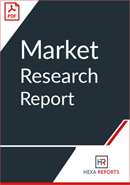Consumer and Recreational Oxygen Equipment: Market Shares, Strategies, and Forecasts, Worldwide, 2017 to 2023
Choose License Type
Report Statistics
Published by:
Category:
Published On:
August 2017
No of pages:
317
Report Format:
Electronic (PDF)
Recreational oxygen is different from medical oxygen. The professional athletes use recreational oxygen. Sports club members are expected to widely adopt use of recreational oxygen. Oxygen bars are commonly used by singers and movie stars to improve the vocal cord quality and skin tone. All these uses of oxygen are anticipated to grow. The O2 is the same in recreational oxygen as it is in the medical oxygen, the chemical composition is the same. But medical oxygen is delivered under a prescription and used as a medicine, recreational oxygen is used to improve athletic endurance and improve brain functioning.
Older people develop dementia and other conditions. Oxygen use by these people is able to improve the quality of the life in a dramatic manner. Portable oxygen devices have become affordable and support a mobile lifestyle that is extended to a broader set of people by use of recreational oxygen selectively, continuing to drive sales of recreational oxygen and oxygen bar concentrator air filtration units.
In all the world, the athletes, the movie stars, and the casinos have in common the use of supplemental oxygen. But, because the FDA does not approve the use of supplemental oxygen except for severe COPD, the physicians are basically left out of this trend. They universally poo poo the value of supplemental oxygen for consumer markets, calling supplemental oxygen a placebo. From this, they might not be too far off as a placebo is basically pure sugar, rendering a boost in energy though that is probably not their meaning as they offer no encouragement for getting supplemental oxygen. The FDA classifies oxygen as a drug and physicians are bound to honor the leadership of the FDA.
Boost supplemental oxygen is called aviator oxygen, as differentiated from medical oxygen. By this, it is meant that the aviator oxygen is delivered manually by the user by a push of a button in contrast to medical oxygen that is delivered in a stream, either continuous or pulsed. This is a significant difference.
On TV, it is common to see professional football players inhaling oxygen. They stand on the sideline to use supplemental oxygen after one shift as they prepare for the next shift. Often this equipment comes from Boost. Professional football players use oxygen to keep themselves fresh, alert and strong. Oxygen is used to keep the players going through to the last play of the game. They use supplemental oxygen to catch their breath faster after exertion of the field of play, and to improve performance.
Consumer recreational oxygen equipment markets at $44.5 million in 2017 are anticipated to reach $2.1 billion dollars by 2023. Professional athletes drive the market initially. Growth is a result of demand for the smaller lighter technology already developed, already on the market, for use by people exercising. Oxygen equipment only gets less expensive, smaller, and easier to use. The market need by for oxygen generation devices at clubs and gyms is building even as portable devices provide greater mobility support for bike riders, joggers, and older people.
Supplemental oxygen is delivered in intermittently to accommodate sets or intervals of heavy exercise. Football players and basketball players use supplemental oxygen, just for a few breaths to catch their breath and improve their endurance in the middle toward the end of the game.
People exercising in sports gyms or corporate gyms use supplemental oxygen judiciously. Old federal judges use supplemental oxygen, to improve the functioning of the brains and permitting them to keep working into their 100’s.
Major factors driving the market for consumer oxygen include its ability to provide oxygen under all circumstances. The worldwide aging population. An increase in the number of people using sports gyms and corporate gyms provides the base for extension of the market. Advantages of newer stationary oxygen concentrator devices are that they weigh less, are somewhat quieter than toe older units, and are easy to use. They are generally affordable but reimbursement drives markets.
There has been a quantum improvement in the professional sports based consumer oxygen technology. Less weight, more power are the characteristics of the new stationary units. The huge jump in technology is illustrated by the effectiveness of the devices in providing improved athletic performance on the field, ice ring, or tennis court among others.
According to Susan Eustis, lead author of the team that wrote the study, “The adoption of consumer recreational oxygen is tied to the actual benefit achieved by its use. People that try getting extra oxygen for the purpose of increasing endurance use the oxygen selectively and it works for them, leading them to continue using supplemental oxygen. They tell their friends and then there becomes a user base, based on reality. This provides the basis for significant market growth. Supplemental oxygen has become affordable, boding well for market expansion.
Companies Profiled
Market Leaders
• Boost Oxygen
• Zadro
• AirSep
• Market Participants
• Chart Industries
• Chart Caire / AirSep / Sequal
• Drive Medical / DeVilbiss Healthcare
• Drive Medical / DeVilbiss Healthcare
• Foshan Keyhub Electronic Industries Co., Ltd.
• Inogen
• Jiuxin Medical
• Leistung Engineering
• Live O2 Oxygen
• Longfian Scitech
• NTK
• Oxygen Plus
• Oxygen Plus / Summit Oxygen
• Philips Healthcare
• Philips Respironics
• POD Oxygen
• Weyergans High Care AG
• Yuwell
• Zadro Health Solutions
• Zorvo Portable O2 Generator
• Zoom
• 2nd Wind Distributors
Key Topics
• Oxygen Concentrator
• Bottled Oxygen
• Recreational Oxygen
• Portable Oxygen
• Home Oxygen Equipment
• Consumer Oxygen
• Sports Club Oxygen
• Managed Exercise Care
• Non Medical Health Care
